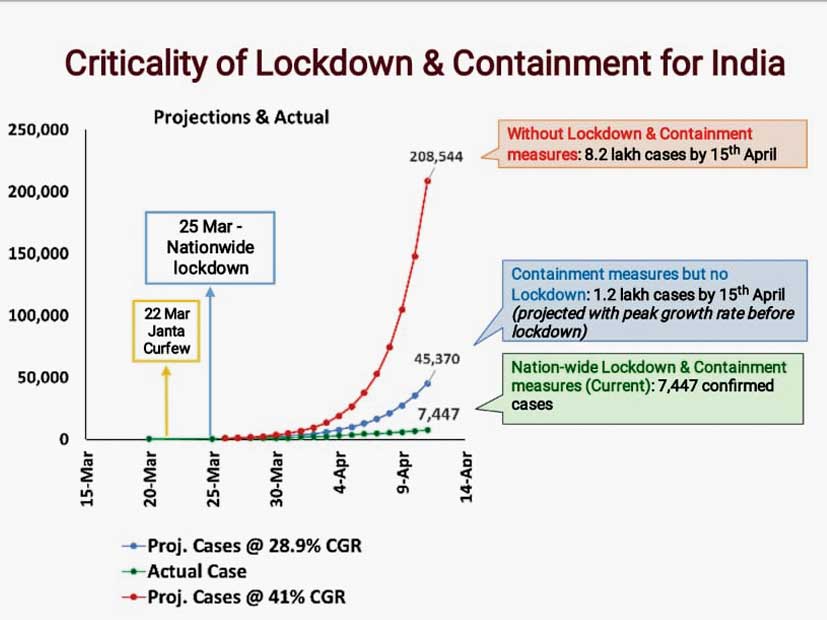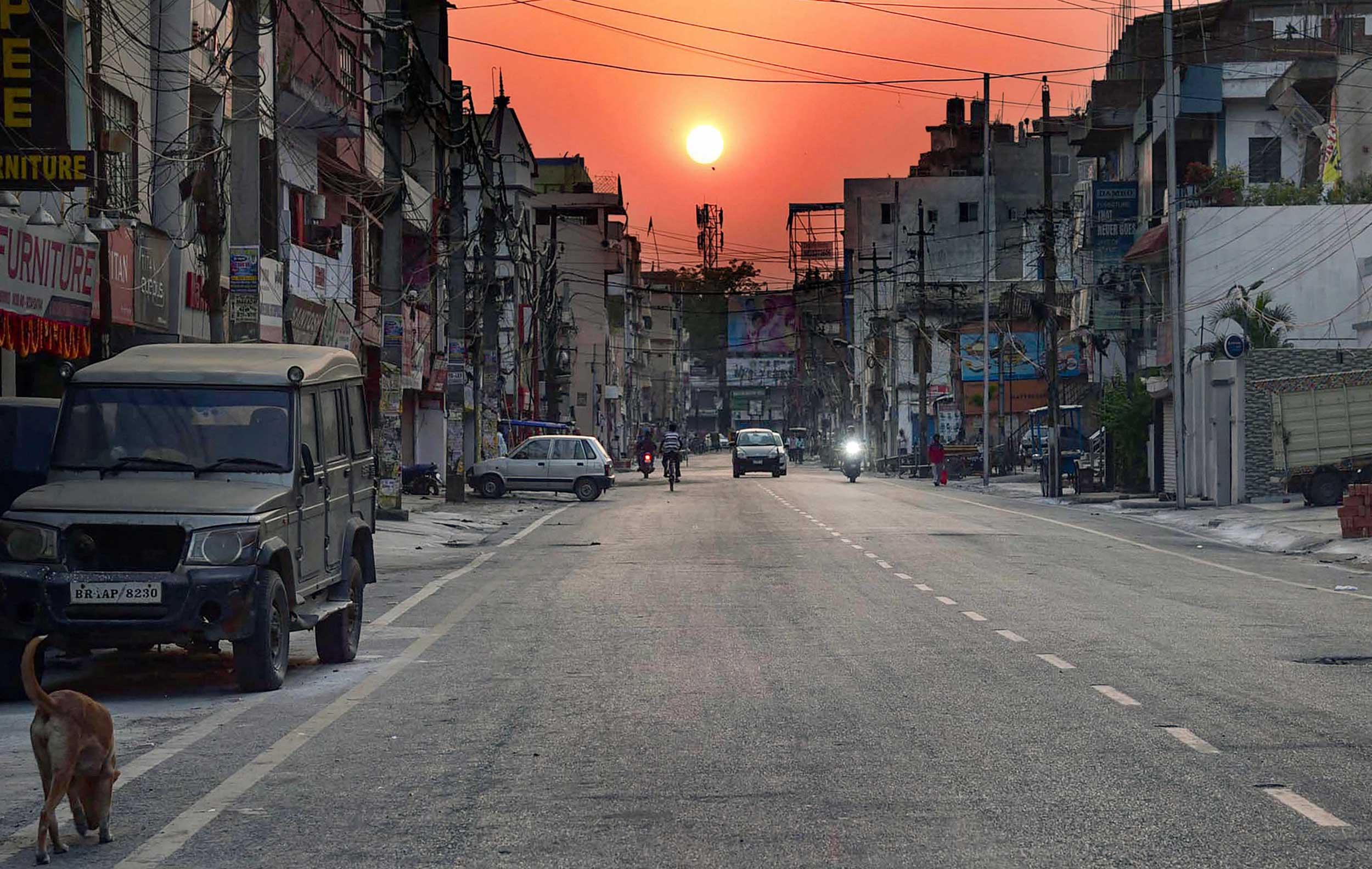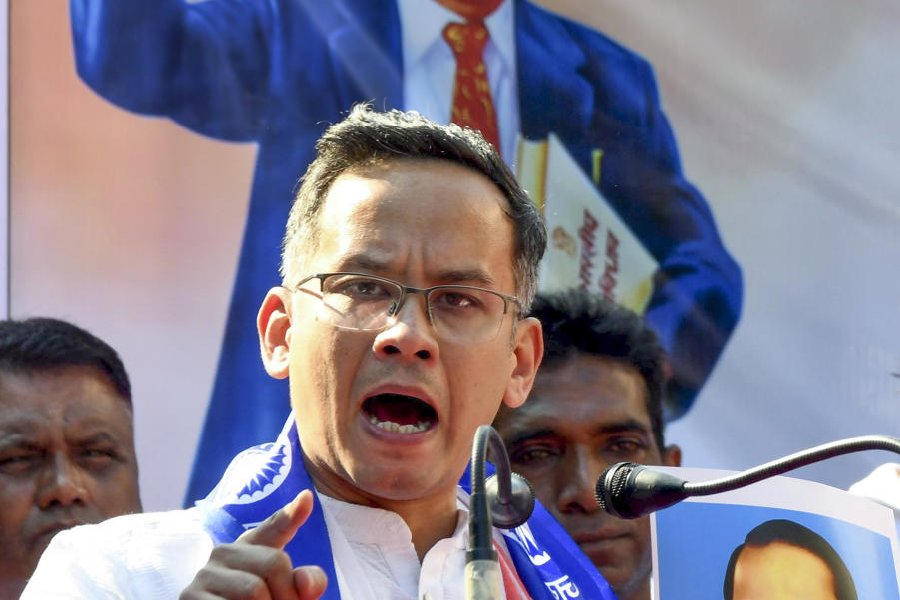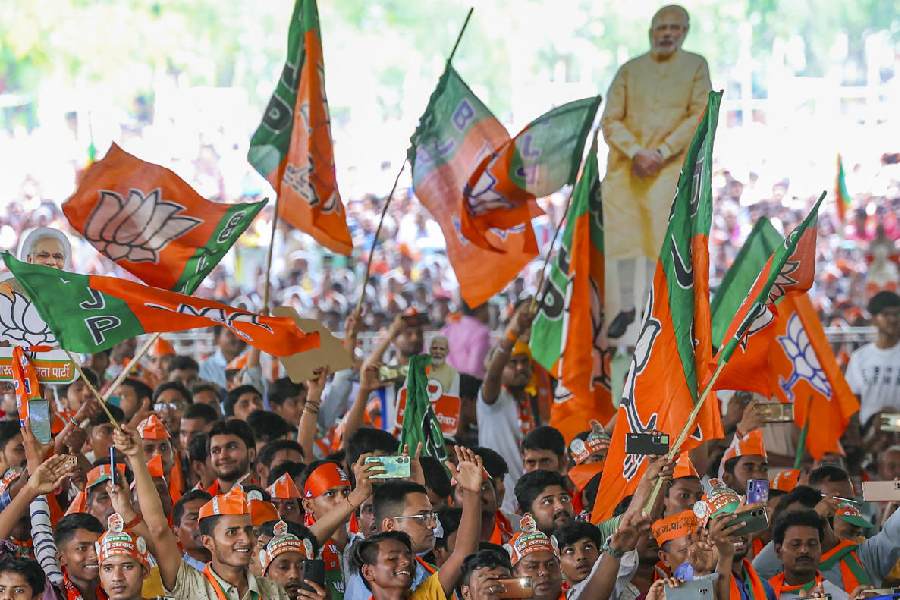India’s coronavirus count would have grown to more than 200,000 patients by April 15, or around 25 times the current number, without the 21-day lockdown and containment measures, the health ministry said on Saturday.
Releasing a single slide, the ministry said the number of the country’s Covid-19 patients would have increased to 208,544 with neither the lockdown nor containment measures, and to 45,370 with only the containment measures but no lockdown.
Health researchers tracking the growth of Covid-19 said that while the lockdown and containment measures were critical and carried enormous value, the single slide released by the government was not sufficient to determine whether the extrapolations were right.

A Union health ministry slide illustrating the gains from the lockdown
A senior health official said the extrapolations were based on a statistical growth analysis. The lockdown and the multiple containment measures — isolating positive patients, tracing contacts and the quarantining of suspects — are designed to slow the spread of the coronavirus.
On Saturday, the country’s count of Covid-19 patients grew by 768, raising the number of confirmed cases to 7,529, including 242 deaths, 36 of them overnight.
The health official said the extrapolated count of 208,544 was based on a 41 per cent projected growth rate while the extrapolated count of 45,370 was based on a 28 per cent projected growth rate.
The ministry did not respond to a query from The Telegraph on the source of the projected rates.
Independent researchers engaged in disease modelling efforts said the limited information provided by the health ministry made it difficult to assess the extrapolated numbers.
“The basis for using 41 per cent or 28 per cent as the projected growth rates is not clear,” said Ronojoy Adhikari, a mathematician at the University of Cambridge in the UK.

A deserted view of a street during the lockdown in Patna on Saturday. (PTI)
Adhikari and his collaborator Rajesh Singh had last month projected the possible patterns of the Covid-19 epidemic in the country with and without various social-distancing interventions.
Adhikari said the assumptions made in a model and the uncertainties in the data — for instance, in the estimated number of asymptomatic or unreported cases — should ideally be made explicit.
“More testing will allow us to reduce the uncertainty over the case numbers, better assess the efficacy of the current lockdown and estimate the required durations of possible future ones,” Adhikari said.
Another public health researcher, also engaged in modelling India’s Covid-19 patterns, said he could not comment on the health ministry slide because “we don’t know what is behind the numbers”.
“The projected gains may be correct, but they depend on what data and what model have they used? Without information about that, it’s hard to say where these numbers come from,” the researcher said.
Calculations by Sitabhra Sinha and his colleagues at the Institute of Mathematical Sciences in Chennai, based on the observed growth rate since March 4, have suggested that without the lockdown, the number of patients in hospital would have been around 15,000 by mid-April.
Outlining India’s preparedness for the growing epidemic, the health official said 586 dedicated Covid-19 hospitals had been established across the country with 100,000 isolation beds and 11,500 intensive care unit beds. The Centre has also ordered 49,000 ventilators.











